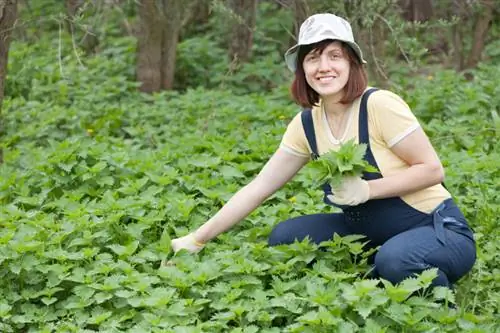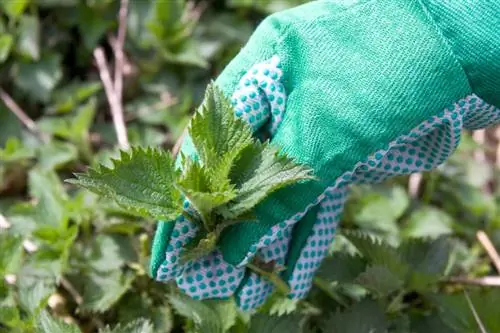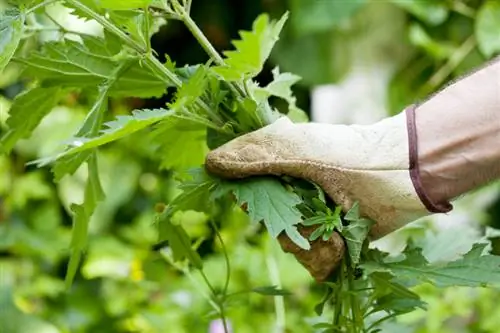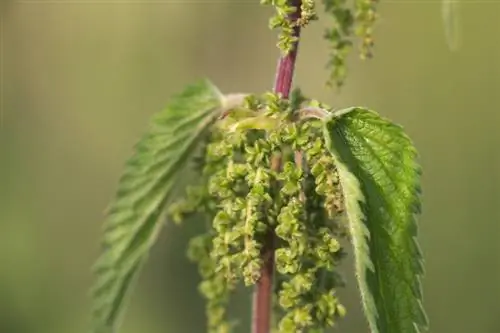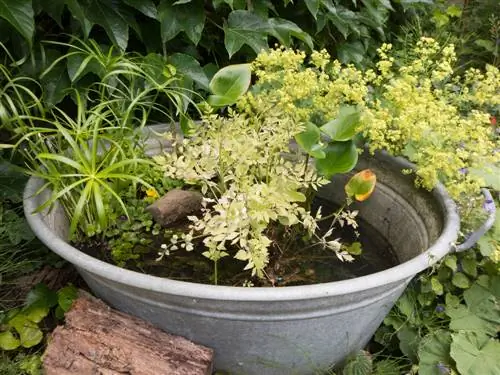- Author admin [email protected].
- Public 2023-12-16 16:46.
- Last modified 2025-01-23 11:20.
Stinging nettles don't have a particularly good reputation. They are known for their burning, itching and hives-causing hairs. But that shouldn't be a reason not to harvest them - after all, they impress with their high nutrient content. But how do you pick correctly without 'burning' yourself?

How do I pick nettles correctly?
To properly pick nettles, wear thick gardening gloves, cover exposed areas of skin, and cut the stem of the plant with scissors or a knife. It is best to harvest nettles between May and June and process the plant parts quickly after picking.
It's better to cut off the entire stems
Picking individual nettle leaves is less effective. It is better to cut off the entire plant at the bottom of the stem. But if you don't want to destroy the entire plant, you can also do detailed work.
First put on a pair of leather gloves (€9.00 on Amazon) or thick gardening gloves. Cheap fabric gloves are not enough here. The stinging hairs of the nettle easily penetrate through this. Then take a pair of scissors or a knife, grab the plant with one hand and cut the stem with the other hand.
Picking without gloves
Stinging nettles don't always burn. If you dare, you can try it without gloves and you don't necessarily have to expect hives afterwards. This is how it works: Pick the leaves from bottom to top.
Better cover exposed skin areas
Attention: Be careful not to wear shorts/dresses or skirts! Sandals are also not unsuitable for picking nettles. You can also burn yourself on exposed skin if you brush past the nettles.
Where and when can you pick parts of the stinging nettle plant?
- Occurrence: In gardens, on the edges of forests, in meadows, on river banks
- Where shouldn't you pick?: On roads, on rubble heaps (nettles there are contaminated)
- Best harvest period: May to June
Process the plant parts quickly after picking
Regardless of whether you have harvested whole stems, individual leaves, just the upper young shoot tips, inflorescences or seeds - after harvesting, plant parts should be used or processed quickly. For example, you can dry them, freeze them, process them fresh into spinach or cook other recipes with them.
Tip
If you have 'burnt' yourself on the nettle: take comfort in the fact that the burning acid helps against rheumatism. You can relieve the itching and burning by applying aloe vera gel to the affected areas.

